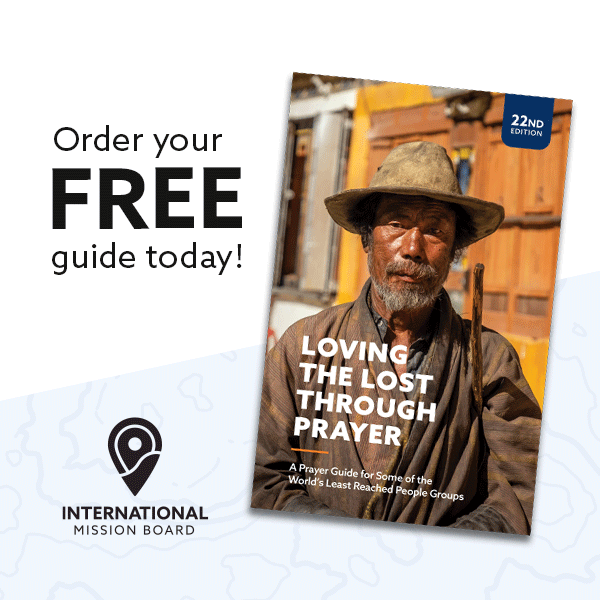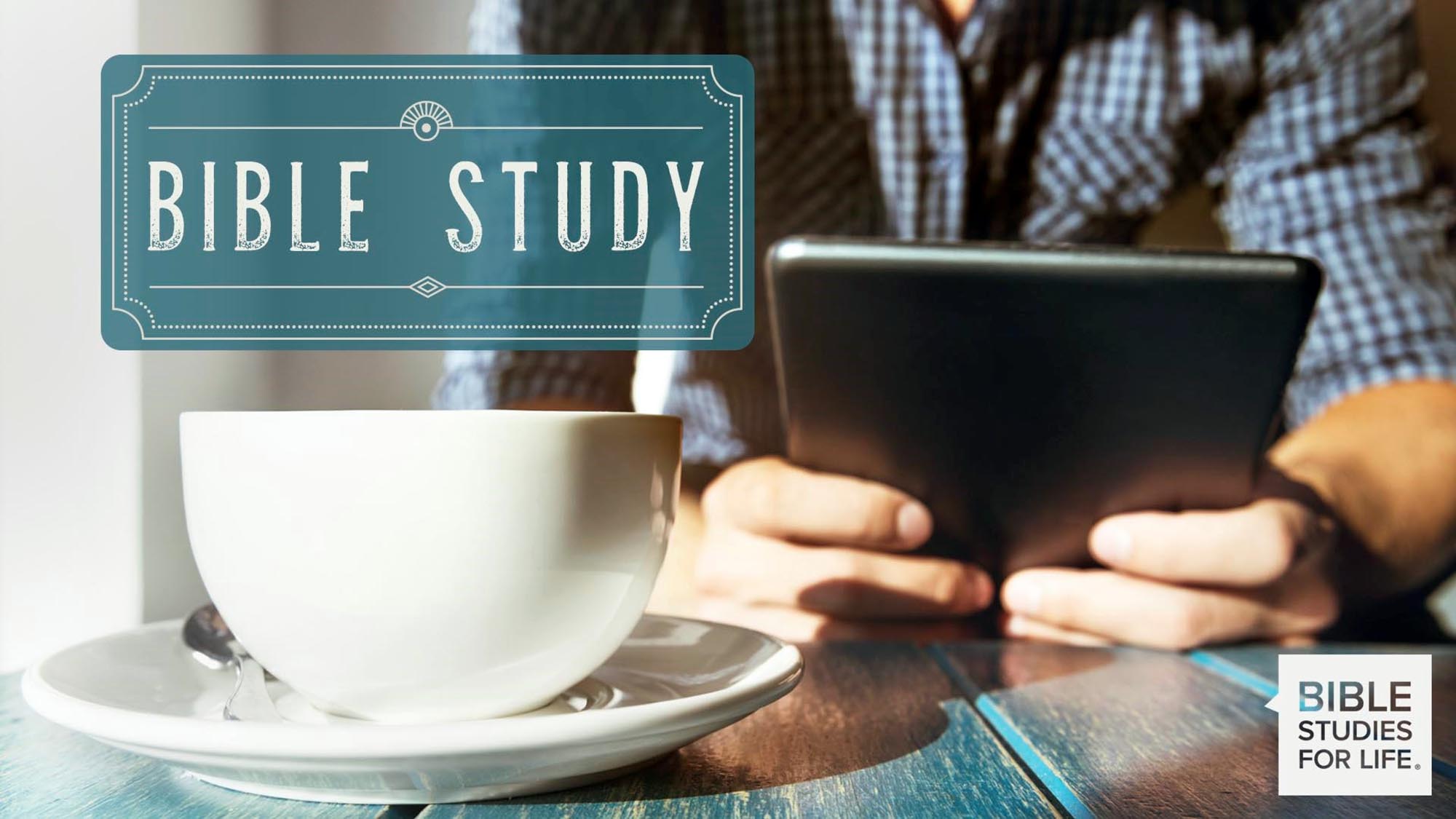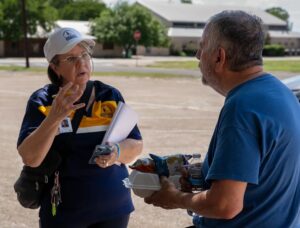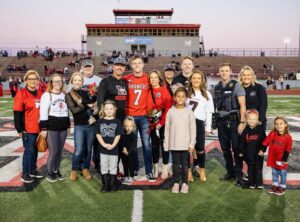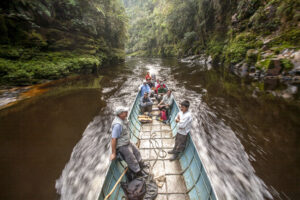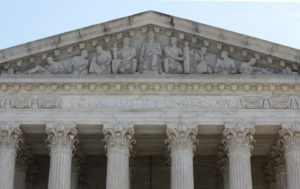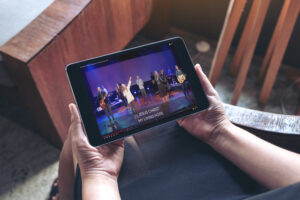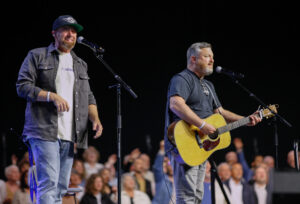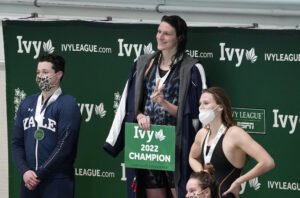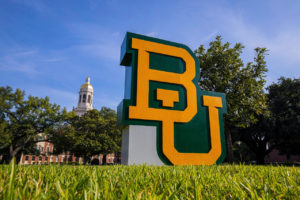

![]() Showing pretty fair pitching form, Randy Chestnut winds up and fires the baseball. With a clang, Randy's fastball nails the metal target and another victim plops into the dunking pool to gales of laughter in the crowd of several hundred.
Showing pretty fair pitching form, Randy Chestnut winds up and fires the baseball. With a clang, Randy's fastball nails the metal target and another victim plops into the dunking pool to gales of laughter in the crowd of several hundred.
And while this block party on a bright, sunny day on the green lawn of Park Heights Baptist Church in the Middleburg Heights section of Cleveland is replete with Gospel music, games for the kids, and food and refreshments for all, it's serious work for Randy and wife Denise. They're doing the King's business.
For two years now, Chestnut has served as director of missions and a North American Mission Board missionary for the Greater Cleveland Baptist Association. Randy wasn't always a Southern Baptist. He was raised in a Roman Catholic home in Dayton, Ohio.
As a Catholic kid in Dayton, he would throw rocks at the neighborhood North Dayton Baptist Church. At 19, he received Christ in a revival service at a Southern Baptist Church. Two years later, he was called to preach. After attending Clear Creek Baptist Bible College in southeastern Kentucky, he pastored in the area for six years. He returned to Dayton, where he would pastor ten years at that same church he used to throw rocks at. He also was married, ordained, and commissioned as a missionary in that same church. Who says God doesn't have a sense of humor?
When he married Denise, his high school sweetheart, twenty-five years ago, he first worked as a construction electrician. Today, he says God "hard-wired" him from birth for his present job as director of missions in Cleveland.
"Without the Annie Armstrong Easter Offering, Denise and I couldn't be serving as missionaries here in the Cleveland area," said Chestnut. "Fifty percent of my salary is supported by the Cooperative Program, so it means the difference between this association having or not having a director of missions."
Chestnut likes to think of himself as a "bridge builder." That's a healthy self-image for a missionary serving in Cleveland, known as the "City of Bridges" because of the more than three hundred bridges that crisscross the city — many spanning the Cuyahoga River.
"God is the greatest bridge builder, and Jesus is the greatest bridge," Chestnut says. "The word in Latin for priest is pontifex, and that word means a bridge builder."
With its population of two million people, Cleveland often gets a bad rap. Chestnut said that's partly because of the city's perennially underachieving major sports franchises — the Browns, the Indians, and the Cavaliers. Cleveland has also seen better economic times. But he said Cleveland is undergoing a revitalization downtown. And Chestnut's working hard to bring a spiritual revitalization, too.
"The people of Cleveland are an interesting, diverse people. We have people from one hundred and seventeen different nations. We have a lot of folks with eastern European roots. But the Asian population is the fastest-growing segment of the population. I'd describe Clevelanders as tough, hard-working people. The weather up here tends to make people tough, but they're also the friendliest I've ever met."
The Greater Cleveland Baptist Association consists of thirty-seven churches; twenty are Anglo while the rest represent different ethnic and language groups, including African-American, Spanish, Korean, Ukrainian, Russian, and Slavic congregations, says Chestnut. There's even a church for the hearing-impaired.
But twenty-four of the thirty-seven churches have less than one hundred people in Sunday worship services. Some use traditional worship, some are contemporary, and one group even employs "rap" and "hip-hop" to get the Gospel message across.
"It's a neat experience to step into those different cultural expressions of worship. That's what heaven is going to be like — not all will be worshiping and praising God in the traditional Southern Baptist style. People in heaven will be of different races, ethnicities, and languages."
Chestnut says one of Southern Baptists' biggest challenges in Cleveland is to be culturally relevant.
"Whether the worship service is traditional, contemporary for young people in the suburbs, or in rap or hip-hop for the inner city, we have to do church in a way that will interest people. That's a real challenge. Now, hip-hop may not be my favorite genre, but I do like to see people reached for Jesus, whatever it takes.
"This summer, we had an event at a public park in downtown Cleveland. We had three events in one — a Christian health clinic; a block party featuring rap, hip-hop and Christian music; and a three-on-three basketball tournament. We had forty people who came to know the Lord," Chestnut said.
Another challenge for the Chestnuts is to inspire and re-invigorate those twenty-four smaller Baptist churches with less than one hundred people at Sunday services.
"Some — not all — of these smaller churches are discouraged and feel like they don't have anything to offer. Some of them feel like their day has come and gone. My job is to challenge them and to show them that God has a great future for them, too."
Help from other Southern Baptists is on the way.
The North American Mission Board has selected Cleveland as a "Strategic Focus City." That means that over the next few years, evangelism and church planting efforts in Greater Cleveland will be intense and extensive. The campaign's theme is Cleveland Hope: Building Bridges of Love.
"By being a Strategic Focus City, we will partner with Southern Baptist churches who will offer us new resources — volunteers, money, and prayers — to expand the Baptist presence and more importantly, the presence of Christ in the Greater Cleveland area. For example, members of the First Baptist Church of Canton, Georgia, came up here to support us with the games and food for the successful block party, where we were able to share Christ and contact many prospects.
"Our partnership with other Southern Baptist churches under the Strategic Focus City program is vital to us," he said. "These partner churches bring their experience, their resources, and their prayers. They also serve as good models for our churches here."
Chestnut's plans for missions in Cleveland go far beyond maintaining the status quo.
"We hope to start thirty-seven new congregations and baptize three thousand by December 2007, which would effectively double the size of our association," said Chestnut. He explained that in the U.S. there is an average of one Southern Baptist church for every sixty-four hundred people, but in Cleveland, there is only one Southern Baptist church for every forty-three thousand people.
To reach the U.S. ratio, Cleveland would have to plant two hundred and twenty-eight more churches over and beyond the thirty-seven it already has. Stated another way, Cuyahoga County (Cleveland) has thirty-eight different cities or towns in the metro area, and thirty of them do not have a single Southern Baptist church.
"So there's plenty of room for our existing churches to reach outside of themselves and be involved in church planting right here in the greater Cleveland area," according to Chestnut.
Chestnut said he's also focusing on the area's colleges and universities.
"We have a lot of colleges and universities in the Cleveland area. We need to reach more of the university students in northeast Ohio. And many of these students come from not only outside the state but also outside the U.S."
Chestnut said that in the next few years, Cleveland — as a Strategic Focus City — will experience a time of intense efforts in evangelism and church planting.
"Sometimes I ask God, 'Why am I here for such a time as this?' Then I remember that my heart has always been for people in the city."
How 2006 AAEO Gifts Will Be Used
Last year receipts to the Annie Armstrong Easter Offering for North American Missions totaled more than $54 million. This year's goal of $56 million will continue to help 5,200 missionaries, many of them jointly sponsored through partnerships with NAMB and state conventions.
These missionaries start churches in rural and urban settings and reflect the ethnic and cultural composition of their communities. The missionaries also share the Gospel by focusing on evangelism and ministering to people's physical and spiritual needs in a variety of settings.
Here is an overview of how this year's receipts will be spent.
75% ($42,000,000) Missionary Support
• Salaries
• Health benefits
• Missionary orientation
• Ongoing missionary training expenses
15% ($8,400,000) Church Planting Support
• Rental of facilities
• Materials
• Promotional expenses
10% ($5,600,000) Evangelism Support
• Scripture distribution
• Sports evangelism
• Special evangelism events
• Media campaigns


